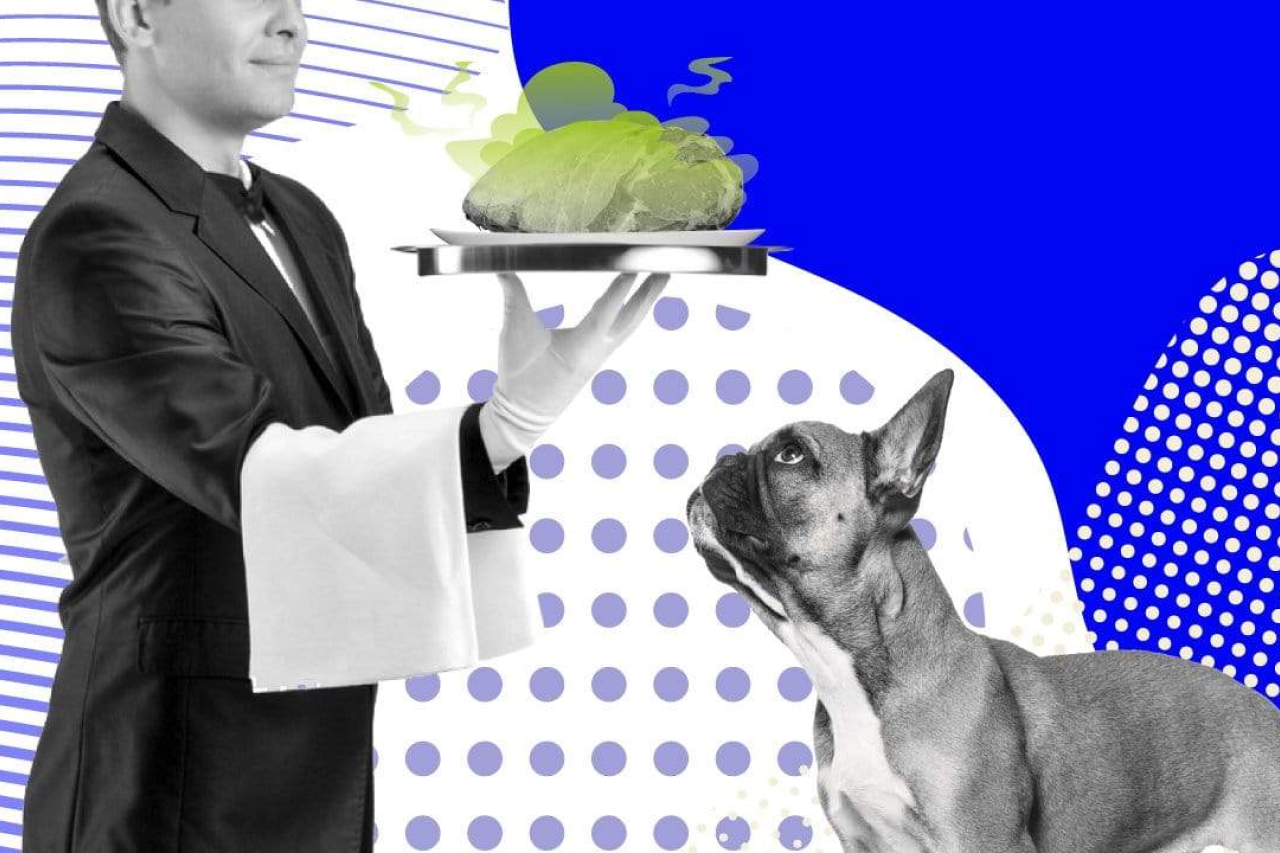
Is Raw Dog Food Safe?
Should You Be Feeding Your Dog Raw Meat?
As dog lovers, we want to give our pets the best food possible, but that’s becoming more and more difficult with new fad diets popping up frequently enough to rival the human diet industry. Head to your local pet food store and you’ll see Pawsecco (a canine non-alcoholic sparkling wine) to celebrate with your pooch on the shelf across from grain-free, protein-plus kibble.
One diet receiving attention is the raw meat diet. At its core, the idea is for pet owners to go to their local grocery store or butcher and buy the highest quality meat they can find, bring it home, and pop it directly into their dog’s bowl for the pet to consume without the meat being cooked. Why are pet owner’s feeding their dogs raw meat? Because that’s what wolves eat, and dogs are descended from wolves. We want to feed our pets as they would in nature, right? Unfortunately, advertising has weaved a deceptive narrative that has our cuddly pups embracing their so-called wild side to eat like their ancestors, while not addressing the very real differences between wolves and dogs, the health concerns associated with raw meat, or the environmental impact.
The Wolves of Madison Avenue
Advertisers have contrived the necessity of a raw diet for dogs based on the idea that what our dogs’ ancestors ate millions of years ago is what is right for them today. While this might sound like a great idea, this marketing ploy doesn’t take into account the way that meat has changed nor that our dogs spend most of their days at home with us rather roaming 100 miles in search of their next meal.
As Ecology and Evolutionary Biology Professor Marc Bekoff tells us, “People are swayed by ridiculously misleading advertisements for dog food that go something like ‘Feed the wolf in your dog.’ Dogs aren’t wolves, and if they ate like wolves, there would be more of an obesity crisis because most dogs don’t get near enough exercise.”
Similarly, wolves were not eating the human-grade meats we’re encouraged to feed our pets, which generally come in the form of beef, chicken, or pork. In reality, our dogs’ ancestors were most likely hunting down rabbits, squirrels, and mice—a meal that would be closer to what your pup tries to catch in the backyard rather than a fresh cut sirloin steak from the butcher shop. Today’s meats are also injected with antibiotics, hormones, or growth-boosting vitamins and minerals—additional elements that certainly wouldn’t have been in the small vermin wolves eat.
Slobber and Salmonella
Aside from the raw diet not being biologically accurate for wolves or dogs, raw meat also has the potential to cause serious harm to you and your family. Back in 2010, the FDA began studying different types of dog foods, including raw meat diets, to find out what amount of bacteria was present that could cause foodborne illnesses.
The study looked at 196 “samples of commercially available raw dog and cat food” and found that almost 8% of samples contained salmonella and nearly 16% contained listeria. In a separate study from 2017 in the Netherlands, researchers found that 86% of the 35 commercial raw pet foods they examined “contained potentially dangerous bacteria.” Not only are these bacteria affecting your dogs, but it can also affect the people in your household.
If you’ve ever received a kiss near your mouth from your dog or let your child’s hands get anywhere near a slobber-covered tennis ball, you’ve all been put at risk for contracting these harmful bacteria, which can cause fever, nausea, diarrhea, and other more dangerous symptoms. Why put your pet, yourself, and your family at risk to feed your dog a fad diet? Instead of worrying about what potentially harmful bacteria your pup is spreading while you cuddle and play, choose a diet that has health benefits and puts your mind at ease.
A Golden Opportunity
Raw diets not only have unfortunate personal effects, but they also have a negative impact environmentally and are a major contributor to human-induced climate change. Think of your favorite golden retriever, maybe the one you know in real life or the one who receives all your “likes” on Instagram because he’s just too cute. He probably weighs in around 70 pounds in all his golden glory.
If this one pup eats a raw meat diet, he will have almost twice the environmental footprint of an average American eating an omnivorous diet. If this same dog were to switch from a raw meat-based diet to a plant-based diet, approximately 2200 gallons of water, 60 square feet of rainforest, 90 pounds of grain, and two animals’ lives would be saved every day, according to animal nutritionists Richard and Susan Pitcairn in their book, Dr. Pitcairn's Complete Guide To Natural Health For Dogs & Cats.
Instead of feeding your dog raw meat, foil the advertisers’ plan, give yourself peace of mind, and protect the environment by feeding your dog a plant-based diet. Learn more about a meat-free diet for your dog from veterinarian Jennifer Coates, DVM.
References
1. Bekoff, M. (2019) "Oh Goodness, Why'd My Dog Erin Just Eat Something So Foul?" Psychology Today, Available at: https://www.psychologytoday.com/us/blog/animal-emotions/201902/oh-goodness-whyd-my-dog-erin-just-eat-something-so-foul 2. Clean Label Project (2017). Pet Food Project Summary. Available at: https://www.cleanlabelproject.org/pet-food/




























